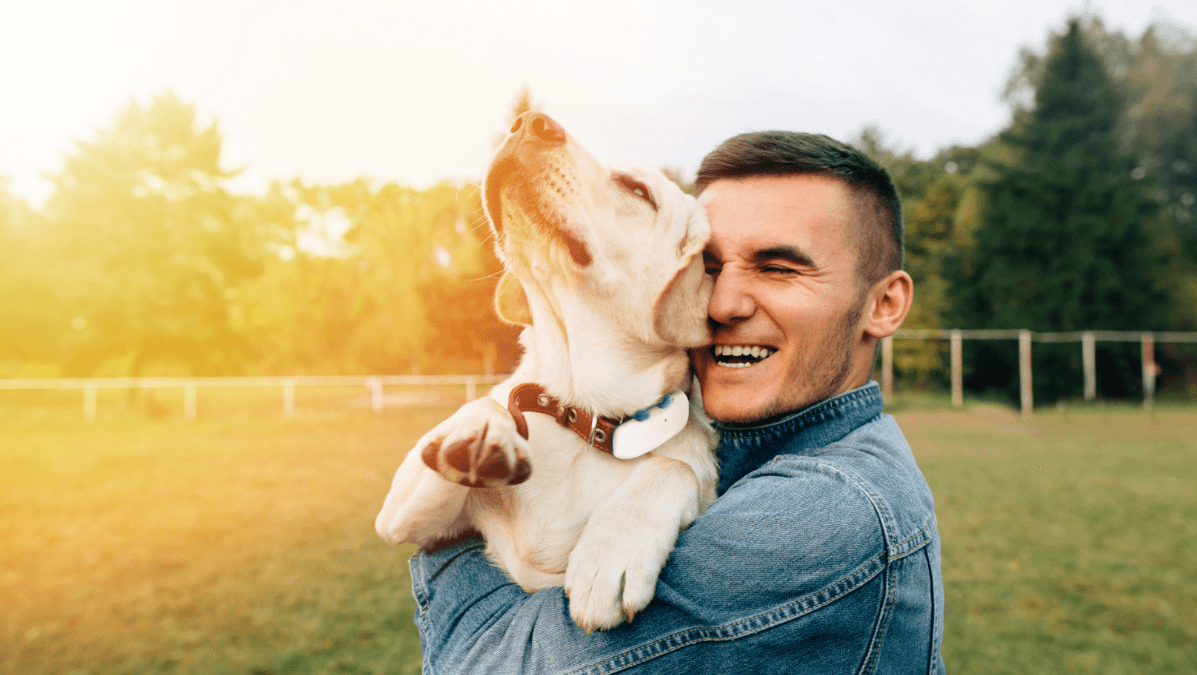Why Is My Dog Hiding & Acting Strange?
Much like cats, dogs also hide for different reasons - some benign, others more serious. Here's everything you need to know about why your dog is hiding from you.
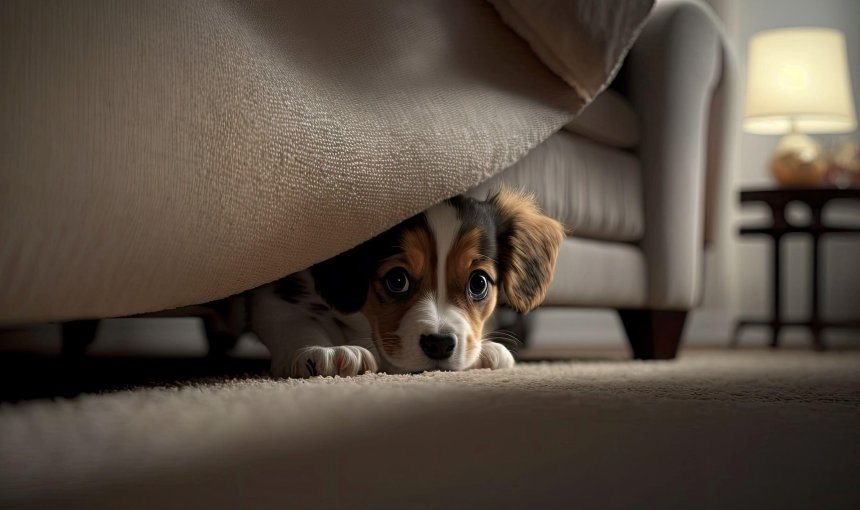
We’ve all been there – coming home after a long day, expecting a welcoming bark and tail wags from our furry friends. Instead, you find your dog MIA. (Or worse, hiding and acting differently than usual.) Which might make you ask yourself, “Why is my dog hiding?” And how do you handle the situation with your dog hiding under a bed, couch or table…and acting strangely?
In this post, we’re going to cover a couple of reasons why your dog is hiding from you. Which might include benign reasons like a love for cozy spots or a hideaway – and also more serious reasons like fear, separation anxiety, and even sickness. We’re also going to cover some quick and easy ways to locate your dog indoors, as well as take a more active role in their health through activity tracking. So you can win your games of hide and seek – every time.
Why is my dog hiding?
You might think hiding behavior in pets is more commonly associated with cats – but dogs hide too, and for a bunch of reasons. In many cases, a dog hiding under a bed isn’t a cause for concern. Here are some of the (slightly) less concerning ones.
A love for cozy spots
Yes, even your sociable dog needs a bit of chill-out time. And with a dark, cozy spot under your bed, it’s how they can hide away for a while. Much like humans (and cats), a private space can help your dog feel more comfortable and grounded. Which is why you might find them hiding under your bed where it’s warm, safe, and surrounded by your scent.
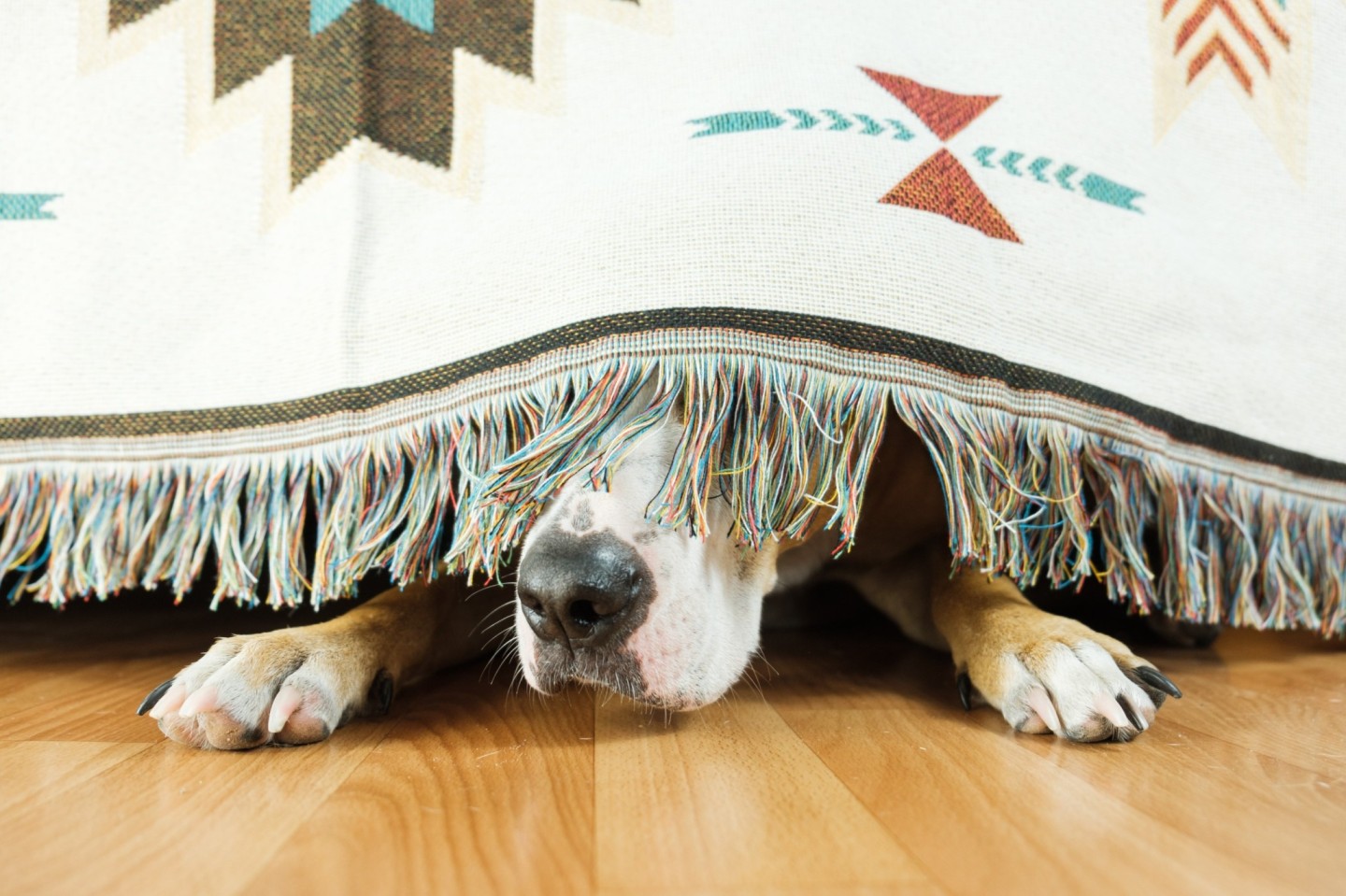
Now it might be cute knowing your dog’s under your bed. But you do want to avoid them looking for a cozy spot somewhere less easy to wiggle out of. Smaller dogs and puppies are always at risk of getting a head or a paw stuck somewhere. (Like under a narrow couch.) Even bigger dogs might get stuck in a cat door or a narrow crawl space if they’re off exploring. Which might look pretty cute on the internet – but really isn’t as entertaining if it threatens your dog’s safety.
So consider recreating a similar, dark, cozy environment elsewhere – like in their crate or kennel. Or keep their sleeping basket in a quiet corner where they can have a little privacy.
A place to hide their stash
“Why does my dog hide under the bed?” is a valid question. But along with that should be: “What is my dog hiding under the bed?”
Whether it’s treats, toys, socks, or more, your dog might hide in different spots around your home to protect their “treasures.” For example, they might have picked up a treat someone dropped on the floor. Or found an unusual-looking mushroom outdoors and brought it back home for inspection. Dogs also tend to be territorial. So their “cave of treasures” might be their way to claim a space that’s theirs alone in your house.
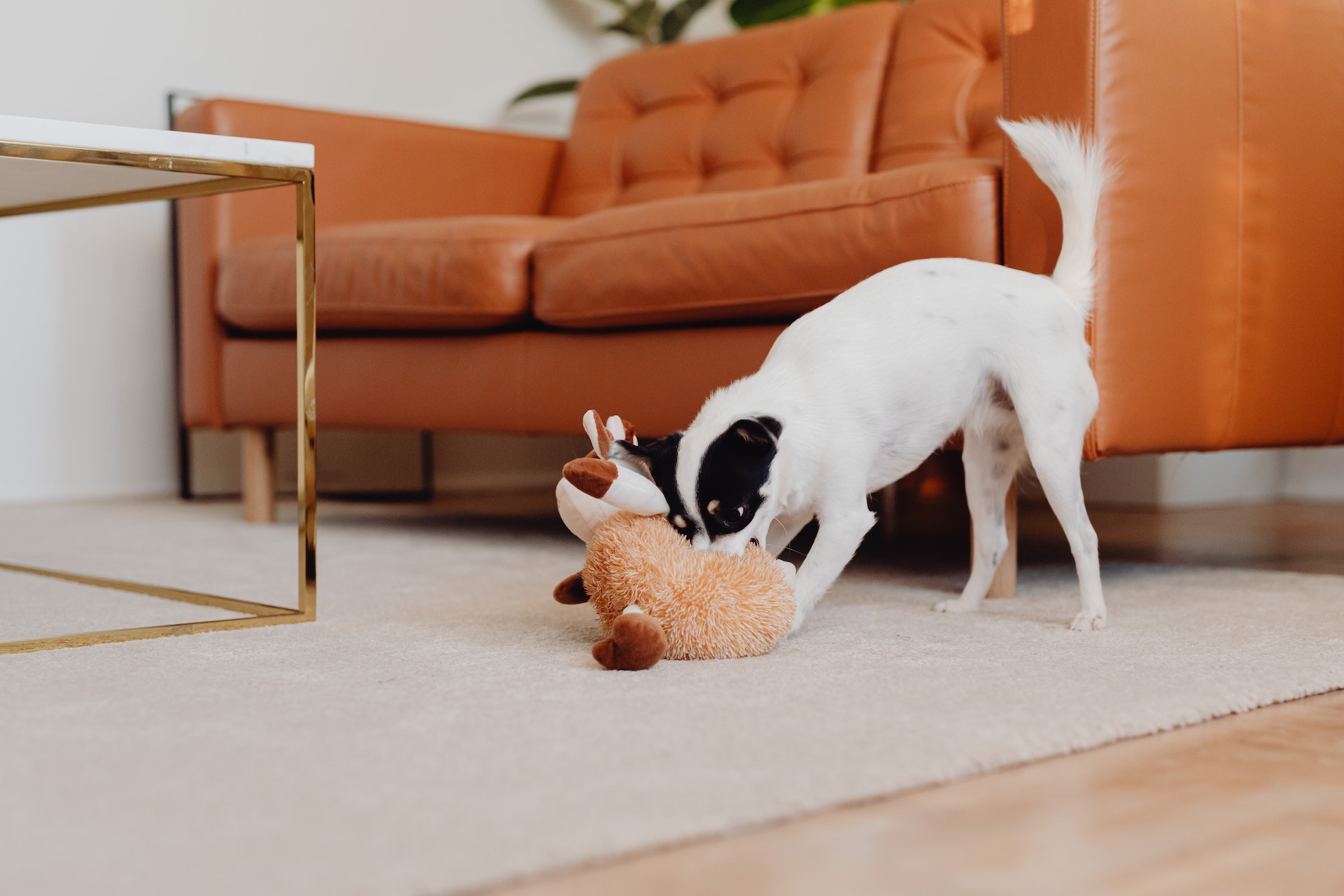
While you want to encourage your dog to explore and enjoy the great outdoors, you also want to avoid them picking up something smelly, infectious, or even harmful. For example, common garden items like snail bait are toxic for dogs. And given their love for rolling around grass, manure, and more, they might pick up fleas, ticks, pollen, or other infections.
But if you know where your dog is off wandering, you can better intervene. Especially if you notice they’re off heading towards the neighboring farm’s freshly-fertilized fields. (Or somewhere stinkier – and maybe less safe.) It’s one of the best ways you can help your dog smell better too.
With Tractive’s real-time GPS tracking, you can locate your dog wherever they’re off roaming. For example, you could set up a “no go zone” and instantly get an alert on your phone if your dog sneaks past it. So you can prevent them from picking up something smelly or even dangerous that they’ll stash under your bed, couch, or elsewhere around your house.
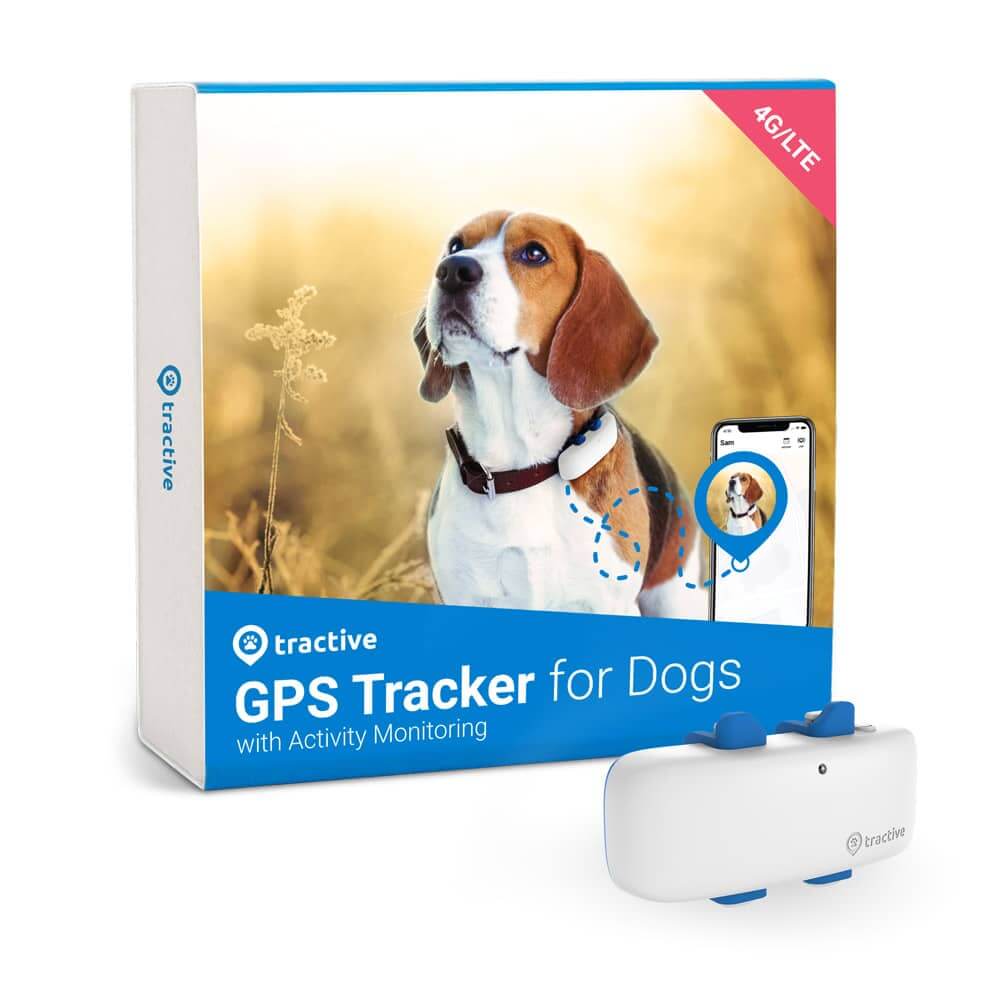
Always know where your dog is
Follow every step in real-time with unlimited range. Get alerts if they wander too far. Keep them happy & healthy with Wellness Monitoring. And let others – like walkers or sitters – keep an eye on your dog too.
A way to warm up – or cool down
Ever wondered whether dog shaving is a good idea? Well, it’s mostly a bad idea, period. Dogs are naturally able to regulate their body temperature – both when it’s warm or cold outdoors. But you might find them hiding under your bed to warm up during winter months. Or when it’s hot outdoors, you might find them lying on a cool floor for a bit of relief.
No matter why your dog is hiding, it’s important that you always know where they are, whether indoors or outdoors. For example, you want to avoid your dog getting stuck in a basement where they wandered into for some warmth or privacy. And if you have a smaller dog or puppy, they might end up hiding or squeezing into a tight spot where they get stuck and can’t escape. (Like a toilet or even among your winter coats.) Which can make it difficult for you to hear them barking or howling for you to come save them.
So here are a couple of quick and easy ways to locate your dog indoors – no matter where they’re hiding.
3 ways to quickly & easily find your hiding dog indoors
Here are three ways your Tractive GPS can help you find your dog indoors – for when they’re in the mood for hide and seek. (And you aren’t.)
Radar Mode
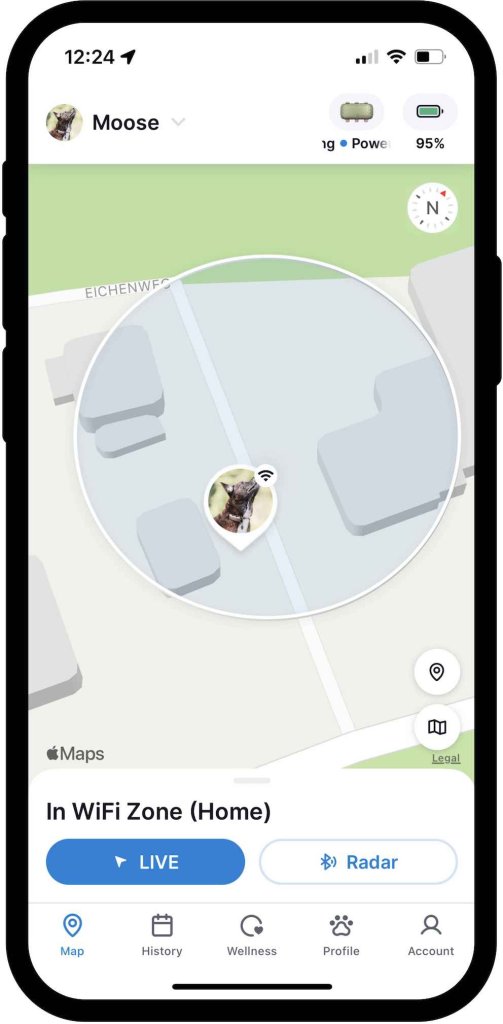
With Tractive’s Radar mode, you can track your dog within Bluetooth range (so around 30-40 feet.)
With your phone or tablet’s Bluetooth proximity feature, you can check whether you’re moving closer or further away from your dog’s tracker.
As you get closer to where your dog is hiding, the rings will turn blue. (And white as you move further away.)
This feature works best when:
- Your dog is mostly hiding in the same location
- You’re within Bluetooth range with your dog’s tracker
- You’re indoors where GPS signal might be weak
Better yet, Radar Mode doesn’t need any network or internet connection to work. So you can find your hiding dog no matter which spot they’ve managed to squeeze themselves into.
Light & Sound
If your dog’s wandered into a dark indoors spot like a basement, it can be difficult to locate them by just calling out their name. Instead, you can activate their Tractive tracker’s Light and Sound features to locate them visually or audibly instead.
- Your Tractive GPS includes an LED light which you can trigger to help you locate your dog in a dark area.
- Or you can trigger your tracker’s Sound function which lets out a high-pitched melody. Which you can follow to find your dog if they’re hiding in plain sight in a brightly-lit area.
Our Sound tracking is specially designed to not spook your dog by its volume. So you can better find them if they’ve squeezed into a quiet spot around your house.
Augmented reality

When using Tractive’s LIVE tracking, you can make use of its Augmented Reality features to find your dog. With this, you can locate your dog through the lens of your device’s camera.
Here, you’ll see a pin with your dog’s name – plus the approximate distance you’ll need to cover to reach them safely.
Just keep in mind that these features work better if you’re at a reasonable distance from your dog. You can always trigger the Light & Sound function to find them once you’re in closer range.
Plus, if you want to massively save on your tracker’s battery – you can also set up a Power Saving Zone with your home WiFi network.
Meaning your dog’s tracker will consume less battery as soon as it picks up that’s in a “trusted” WiFi area – letting you track your buddy with ease.
Even better, Tractive’s new Base Station helps you set up a Power Saving Zone wherever you go!
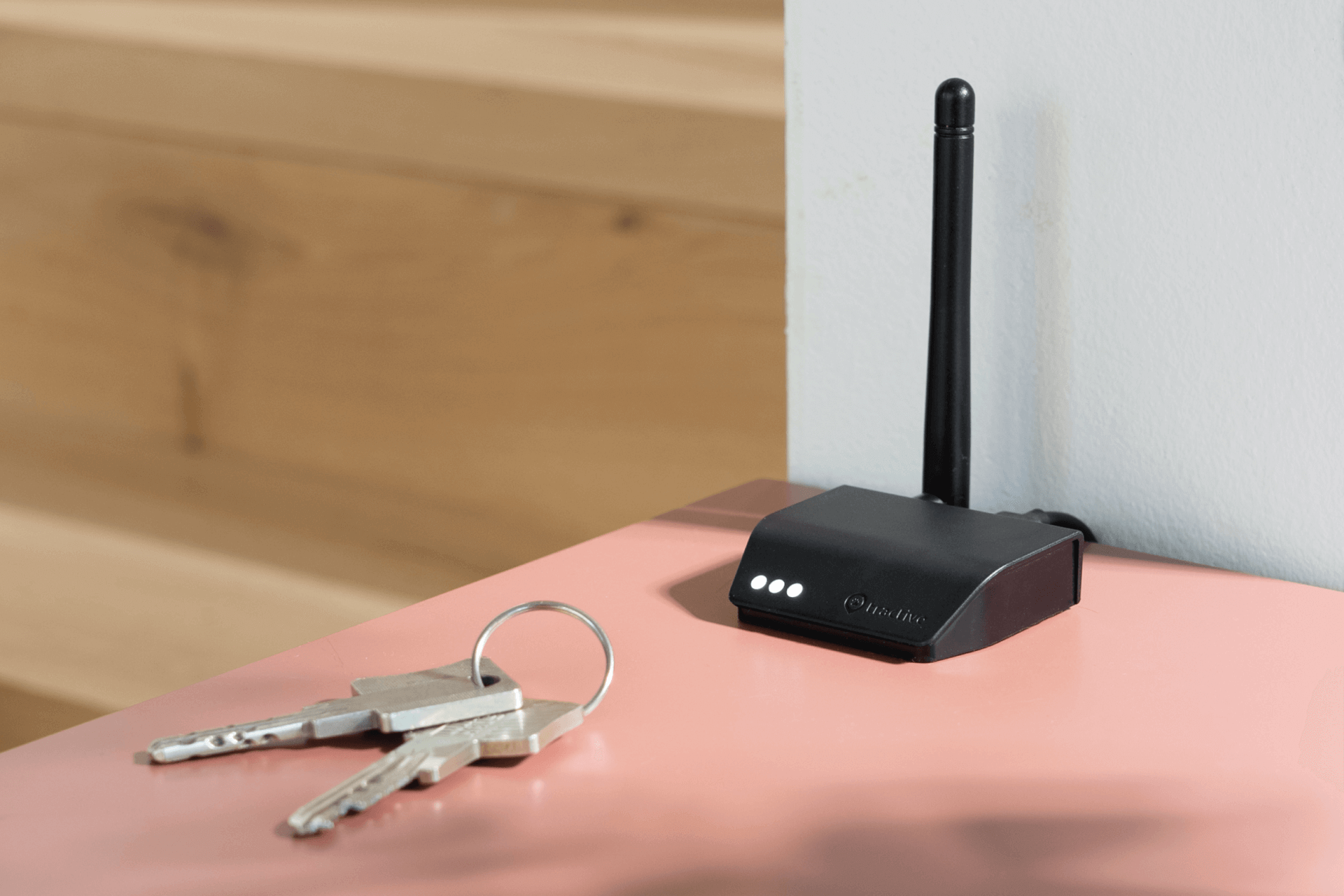
With all these ways to find your hiding dog, you’ll be on your way to helping them create a safer home for them in no time. Making every game of hide and seek more fun and less frightening instead.
But how do you explain it when your dog is hiding…and acting strange?
My dog is hiding & acting strange – what gives?
We’ve covered some of the less concerning reasons why your dog might be hiding. But if you’re noticing them hiding along with changes in their regular behavior, watch out. Here are some more serious reasons behind this behavior.
Your dog might be feeling stressed
Much like cats, dogs tend to get thrown off balance when there’s a big change in their environment. Changes like new humans, pets, neighbors, construction in your neighborhood, or switching homes can all be stressful for them.
For example, if you’ve adopted a new pet, your dog might be antsy around them and hide as a result. So if you’re observing they seem more restless or agitated than before and are hiding away more than usual, keep an eye out for changes in your environment.
Once you’ve figured this out, make sure to bring some routine and familiarity back to your home. Set a regular schedule for feeding, walking, and playtime together. Spend some quality time with your buddy and help them remember they’re still your favorite. Prioritize regular exercise and ensure your dog is getting enough outdoors time. (Because staying indoors can actually make them feel bored and agitated instead.)
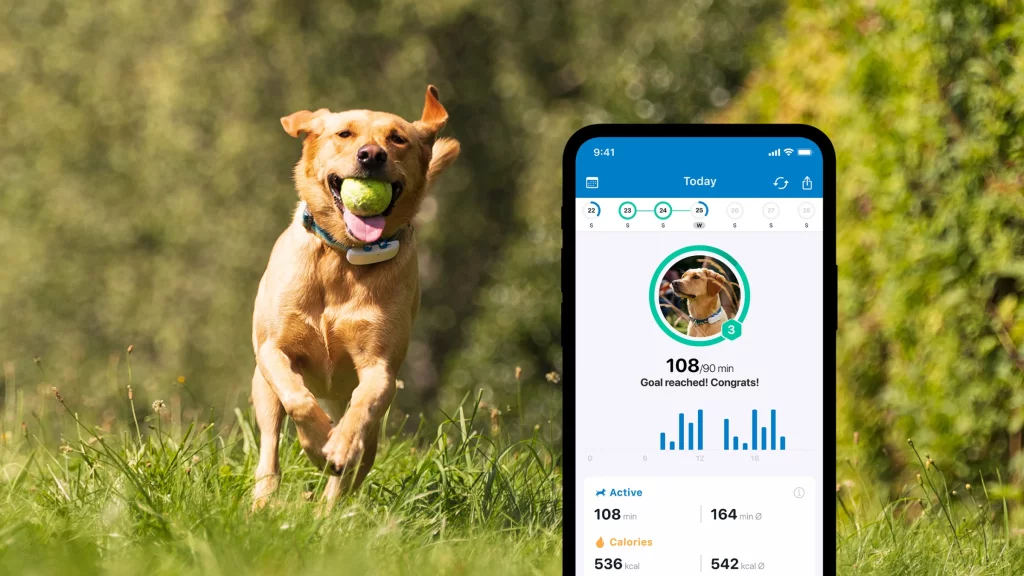
💡 Regular playtime with your buddy both helps them feel less stressed – and also keeps them healthy. Plus, with Tractive’s Activity Tracking, you can monitor how much exercise your dog’s been getting. (Or if their activity has dropped instead – which could be a sign they’re sick.)
Tractive’s Activity Tracking features also help you compare how your buddy is doing to other, similar dogs across ages and breeds. So you can stay motivated and ensure they’re getting enough exercise.
Your dog might hide because they’re scared
Dogs might hide simply because something in their environment has majorly spooked them. Most of them are terrified of loud noises like thunderstorms and fireworks. These sounds, combined with bright flashes of light, can cause them to hide away under your bed or in a closet to feel safer. And since your dog’s sense of hearing is several times better than ours, it can be a frightening, disorienting experience for them.

In fact, more dogs go missing around the 4th of July than any other time of the year. Plus, if you’ve just adopted a dog, they might not be 100% comfortable around you or in your house yet. So they might even run away to hide somewhere they feel safer. (Like a neighboring barn.) Or if you’ve had your dog for a while, hiding in a dark, cozy spot can be a coping mechanism for them.
So in times like these, create a safe space for your dog indoors and try to stay with them as much as possible. Do your best to stay calm yourself and help your dog understand that the loud sounds outdoors aren’t a threat. Our post on how to calm dogs during fireworks covers some other tips in greater detail – including how the Tractive GPS saved the life of a dog who ran away during a national celebration. (And was rescued from a rock in the middle of the sea!)
Your dog might hide because they’re anxious
Dogs form strong, lifelong bonds with their parents. But in some cases, they might develop separation anxiety instead. (Like if they’ve been weaned or orphaned early.) This is when your dog feels excessively distressed at the thought of you leaving. Which is why you might find them hiding under your bed, which has your scent – to provide them a sense of safety.
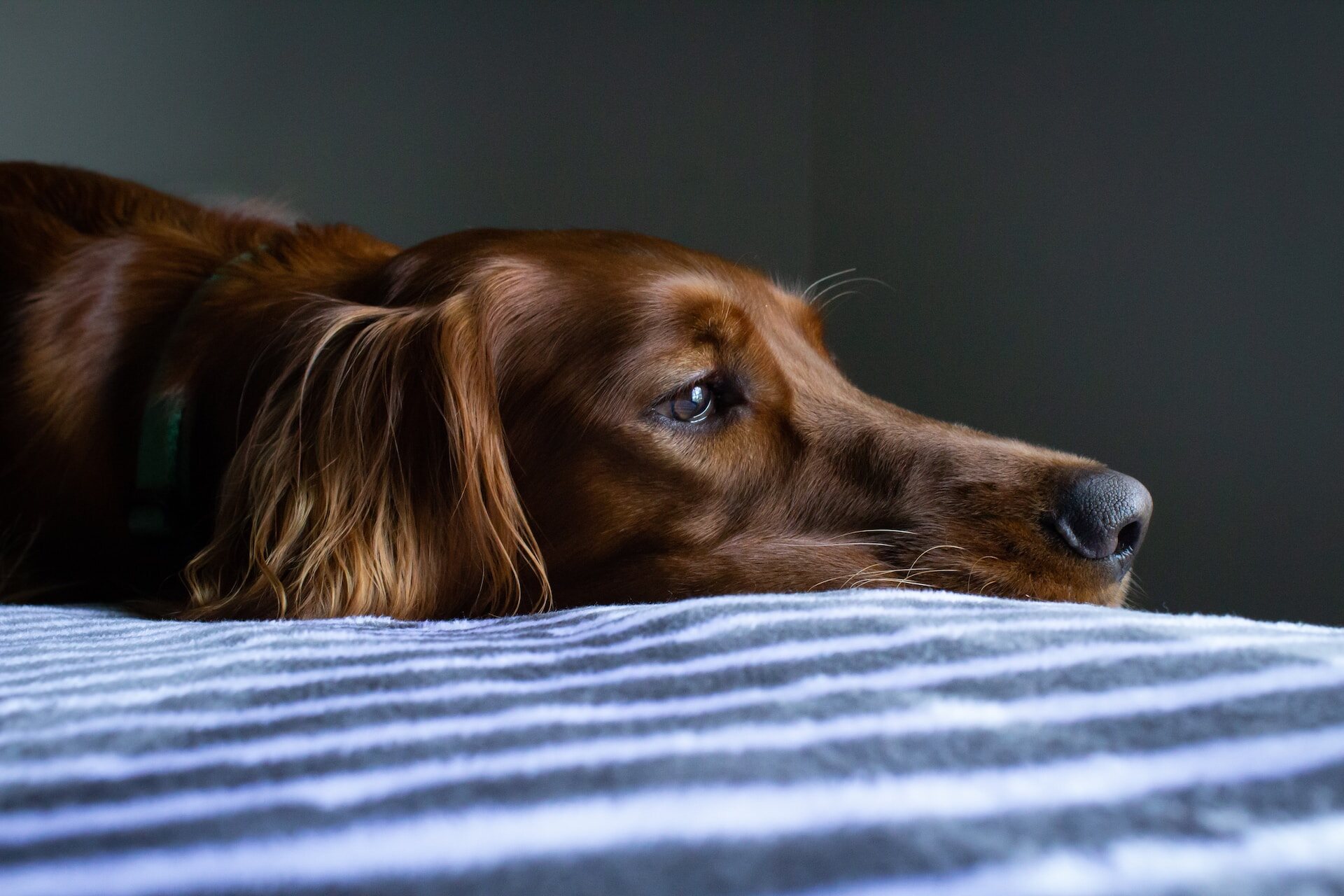
Dogs are also vulnerable to trauma – especially if they’ve experienced abuse in the past. As a result, they may have learned to associate certain situations or people with danger. Hiding is a way to help them escape from such threats.
In times like these, it’s best to help build trust with your dog, step by step. Practice gradual departures – and give them a ton of praise and pets once you’re back. Make sure to spend enough quality time with your buddy so that they learn to trust you’ll return. With time and practice, you’ll find your dog less likely to hide away as they come to see you as a safe, reliable companion.
Your dog might hide because they’re ill
Much like cats, dogs are more likely to mask signs of discomfort and pain. It’s an evolutionary instinct hard-wired into their behavior. (Because a sick or injured wild dog or wolf is more vulnerable to predators – so they’re more likely to hide away to deal with it themselves.) Which can make it easy to miss out on the signs they’re struggling with an illness, injury, or infection until it’s too late.
One of the first signs your dog might be sick is if they seem more lethargic than usual. But even dogs struggling with sickness might seem normal and healthy. Plus, if your dog is off hiding…how are you going to keep an eye out for the signs they’re sick in the first place?
This is why vets recommend tracking your dog’s activity levels to ensure they can still keep up with you. If your dog seems more reluctant than usual to exercise or would prefer hiding away instead, it might be cause for concern.
With Tractive’s Wellness Monitoring features, you can track both your dog’s sleep and activity over the long term. So you can more easily catch on to changes (like a dip in their activity levels) – and take action just in time. Like this Tractive pet parent, who caught on to a change in her dog’s behaviors from their Wellness profile – and narrowly avoided a medical emergency:
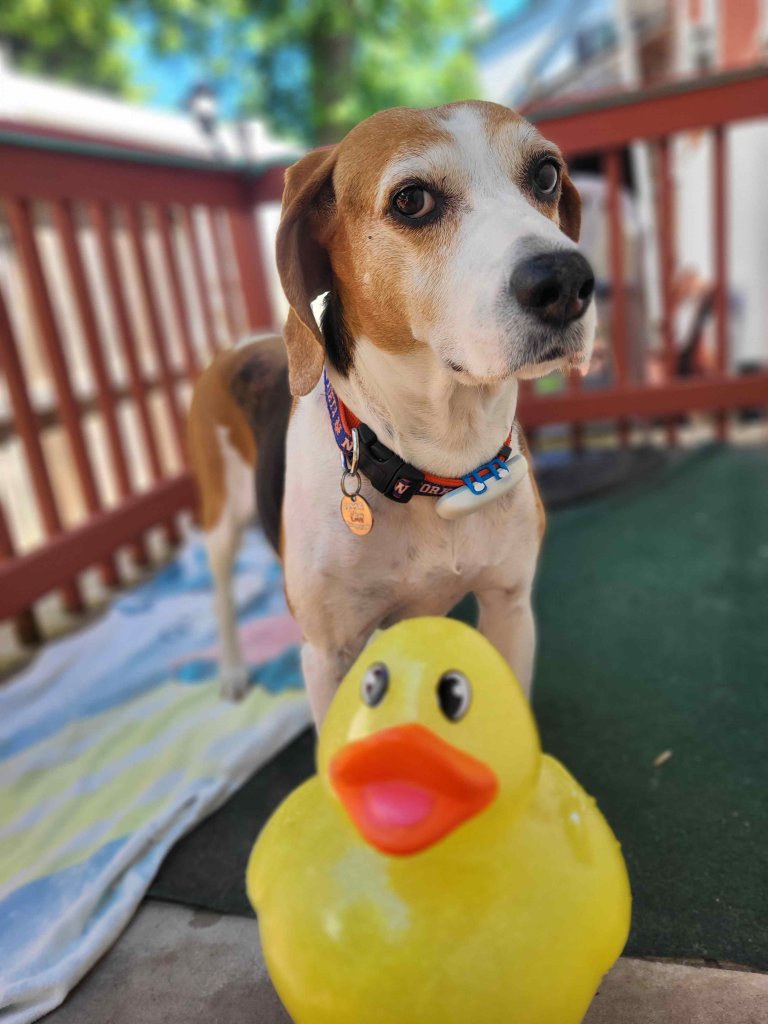
“When I looked at Ruby’s Wellness profile, the data showed that her activity level was low and that she hadn’t slept well. I was concerned and watched her carefully.
Early the next morning, she had blood in her urine and was lethargic. We visited the emergency veterinarian, and Ruby was diagnosed with a UTI.
She received antibiotics and pain medication and is feeling much better. Her tracker data made me aware that she was not acting normally and that something could be wrong with her.
I love her tracker, and I will always have one for any dog I ever own.“
– Katie J, Delaware

“Everything we build puts pets and pet parents first. It’s why we’ve built one device that tracks all aspects of your pet’s safety, from location to wellness. So you can holistically keep them both safe and happy.”
– Sebastian Raab, Product Manager at Tractive & occasional pet-sitter
Win every game of hide & seek with your dog – for good
Dog hiding under bed? Not always a cause for concern. In many cases, it might be due to benign reasons. (Like a love for cozy spots, chill out time, territory, or wanting to stay warm.) In times like these, you still want to ensure your dog is hiding somewhere you can rescue them from. Which you can guarantee with indoor tracking features like Tractive’s Radar Mode, Light & Sound, and even Augmented Reality to help you find them more easily.
In other cases, your dog might hide due to stress, anxiety, fear, or even illness. Keep an eye out for changes in your environment – and help them overcome their anxiety with your presence. A frightened dog might be likely to run away to hide somewhere safe. Or to manage a sickness by themselves. But with Tractive’s GPS & Health tracking, you can holistically keep your pet safe – no matter where they are or what their condition is.

Stay on top of your dog’s wellness
See how they’re doing at a glance with Wellness Score. Set goals. Compare with dogs like yours. Monitor sleep. Detect issues and keep them healthy.
With patience, love, and understanding, you can help your furry friend hide less out of fear, anxiety, or stress. (And more because they genuinely feel safe and content surrounded by your bedroom slippers.) Taking both of you towards a longer, happier, healthier relationship for the long term.
Want to redirect your dog’s hiding behavior into something more fun instead? Here’s Ellie, a Golden Retriever who can sniff out her parents wherever they are at home – sometimes in under a minute!


